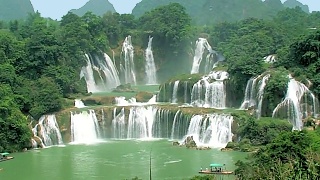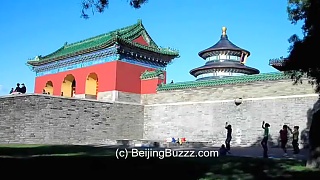With EpicGlobe Walks ..
[640],shadow=true,start=,stop=Huangyao Ancient Town
Huangyao Ancient Town, GuangXi province, is a well-preserved historic town known for its ancient architecture, cobblestone streets, and serene environment. Here’s a detailed guide to everything you need to know about this hidden gem.
History and Background
Huangyao Ancient Town has a history dating back over 1,000 years, with its origins traced to the Song Dynasty (960–1279 AD). It flourished during the Ming (1368–1644) and Qing (1644–1912) dynasties as a bustling commercial hub due to its strategic location along trade routes. The town was named after the dominant Huang and Yao families who settled here. Unlike many other ancient towns in China, Huangyao has retained much of its original charm, avoiding over-commercialization.
Architecture and Layout
The town is a living museum of Ming and Qing dynasty architecture, with over 300 well-preserved ancient buildings. Key architectural features include:
- Black Tiles and White Walls: Traditional southern Chinese-style buildings with black-tiled roofs and whitewashed walls.
- Cobblestone Streets: The narrow, winding streets are paved with smooth cobblestones, polished by centuries of foot traffic.
- Courtyard Houses: Many homes feature central courtyards, reflecting traditional Chinese family life.
- Ancient Bridges: Stone bridges, such as the Dai Long Bridge, connect different parts of the town and add to its picturesque charm.
Main Attractions
Here’s a detailed look at the must-see spots in Huangyao:
1. Dai Long Bridge (带龙桥)
- A stunning ancient stone bridge that spans the Peacock River.
- Offers breathtaking views, especially during sunrise or sunset when the water reflects the surrounding karst mountains.
- A popular spot for photography and quiet contemplation.
2. Ancient Banyan Trees
- Huangyao is home to several ancient banyan trees, some over 1,000 years old.
- The most famous is the "Couple Tree", where two banyan trees have grown intertwined, symbolizing love and unity.
3. Baozi Mountain (宝珠山)
- A small hill located in the center of the town, offering panoramic views of Huangyao and its surroundings.
- At the top, you’ll find the Baozi Mountain Temple, a quiet place for reflection.
4. Ancestral Halls and Temples
- Huang Family Ancestral Hall: A well-preserved hall showcasing the history and achievements of the Huang family.
- Ouyang Temple: Dedicated to the Ouyang family, another prominent clan in the town.
- Guanyin Temple: A small temple dedicated to Guanyin, the Goddess of Mercy.
5. Peacock River (孔雀河)
- The river winds through the town, lined with ancient buildings and lush greenery.
- Visitors can take a bamboo raft ride to enjoy the serene scenery.
6. Ancient Theater Stage
- A historic stage where traditional operas and performances were held during festivals.
- The intricate carvings and decorations on the stage are a testament to the town’s cultural heritage.
7. Stone Tablet Inscriptions
- Scattered throughout the town, these inscriptions provide insights into Huangyao’s history and the lives of its inhabitants.
Cultural Experiences
Huangyao is not just about sightseeing; it’s also a place to immerse yourself in local culture:
- Traditional Festivals:
- If you visit during Chinese New Year or the Lantern Festival, you’ll witness lively celebrations with dragon dances, lantern displays, and traditional music.
- Local Handicrafts:
- The town is known for its handmade soy sauce and fermented bean paste, which you can watch being made in small workshops.
- You can also find locally crafted bamboo products and embroidery.
- Folk Performances:
- Occasional performances of Guangxi opera and folk songs are held in the ancient theater.
Local Cuisine
Huangyao’s food is simple yet flavorful, reflecting the town’s rural roots. Must-try dishes include:
- Huangyao Tofu Pudding (黄姚豆腐脑):
- A soft, silky tofu dish served with soy sauce, chili, and peanuts.
- Huangyao Rice Noodles (黄姚米粉):
- A hearty bowl of rice noodles topped with braised pork, pickled vegetables, and herbs.
- Stuffed Glutinous Rice Balls (酿糯米球):
- A local specialty made with glutinous rice and filled with meat or vegetables.
- Fermented Bean Paste (豆豉):
- A savory condiment made from fermented soybeans, often used to flavor dishes.
Best Time to Visit
- Spring (March–May): Mild weather and blooming flowers make this an ideal time to visit.
- Autumn (September–November): Cool and comfortable, with clear skies and vibrant foliage.
- Avoid Summer (June–August): The weather can be hot and humid, and the town may attract more tourists.
How to Get There
Huangyao is located about 200 kilometers from Guilin and 120 kilometers from Yangshuo. Here’s how to reach the town:
- From Guilin:
- Take a bus from Guilin Bus Station to Huangyao (approx. 3–4 hours).
- Alternatively, hire a private car or join a guided tour.
- From Yangshuo:
- Buses and private transfers are available, taking around 2–3 hours.
Where to Stay
Huangyao offers a range of accommodations, from budget guesthouses to boutique hotels. Staying overnight is highly recommended to experience the town’s peaceful atmosphere after the day-trippers leave. Options include:
- Traditional Guesthouses: Stay in a restored ancient building for an authentic experience.
- Boutique Hotels: Some hotels offer modern amenities while maintaining traditional aesthetics.
Travel Tips
- Wear Comfortable Shoes: The cobblestone streets can be uneven, so sturdy footwear is essential.
- Cash is King: Many small shops and vendors may not accept credit cards, so carry some cash.
- Respect Local Customs: Huangyao is a living community, so be mindful of residents’ privacy and traditions.
- Explore Early or Late: To avoid crowds, explore the town early in the morning or late in the afternoon.
- Learn Basic Chinese: While some locals may speak basic English, knowing a few Mandarin phrases can enhance your experience.
Why Visit Huangyao?
Huangyao Ancient Town is a perfect destination for travelers seeking:
- A glimpse into authentic rural Chinese life.
- Stunning natural scenery combined with historic architecture.
- A peaceful and less touristy alternative to more famous ancient towns like Lijiang or Fenghuang.
Whether you’re a history buff, a photography enthusiast, or simply looking for a tranquil retreat, Huangyao Ancient Town promises an unforgettable experience.

 HuangYao ancient town, GuangXi province – historic charm and natural beauty
HuangYao ancient town, GuangXi province – historic charm and natural beauty

















